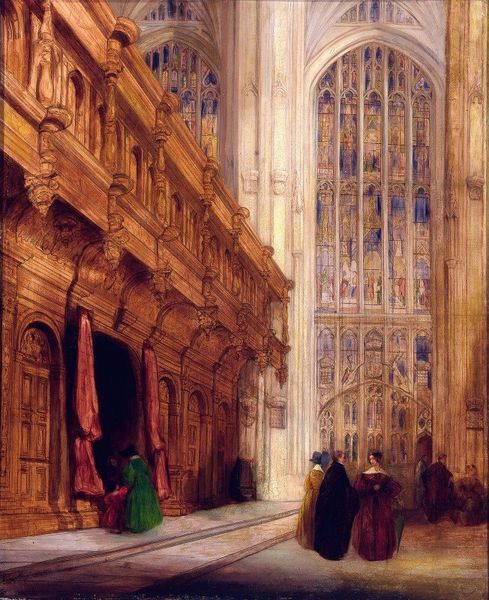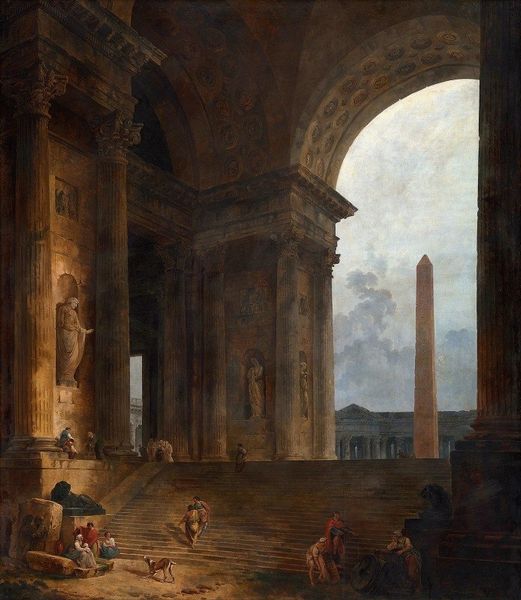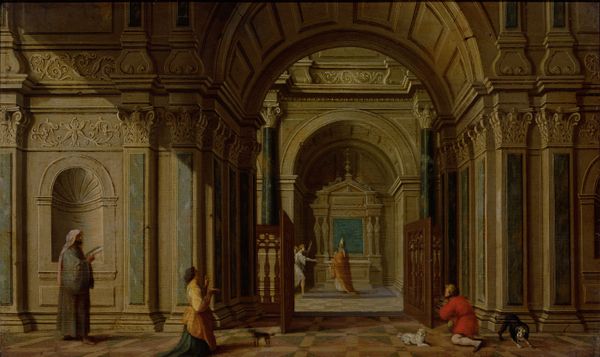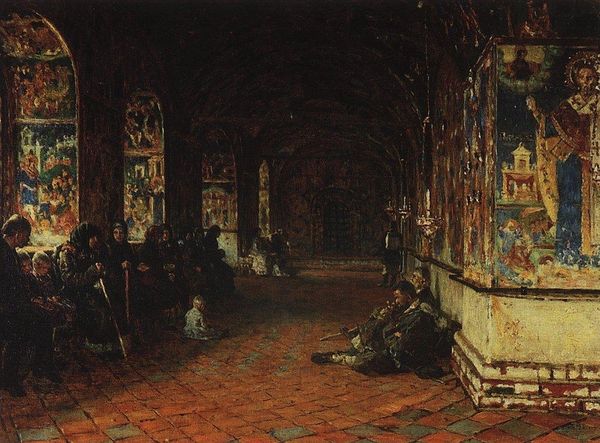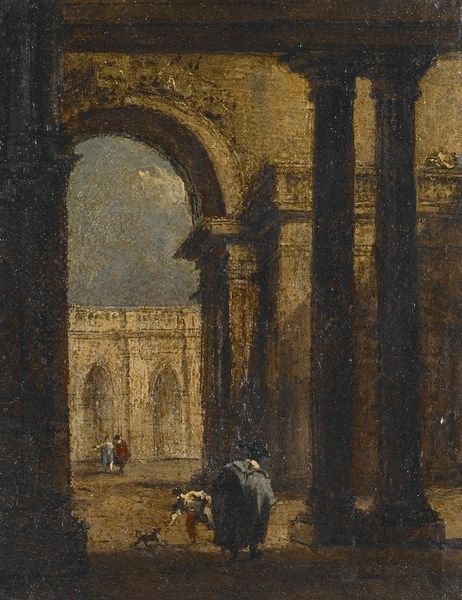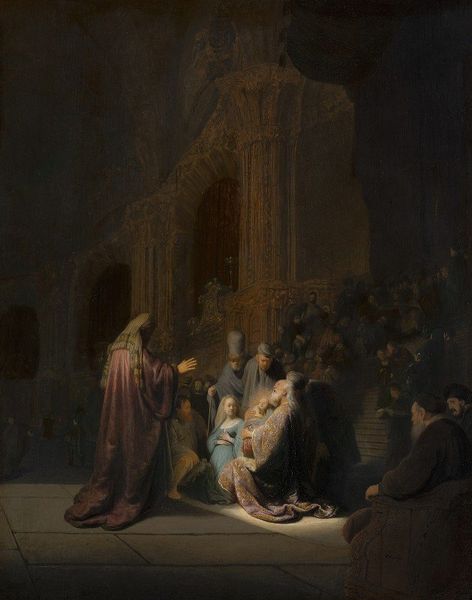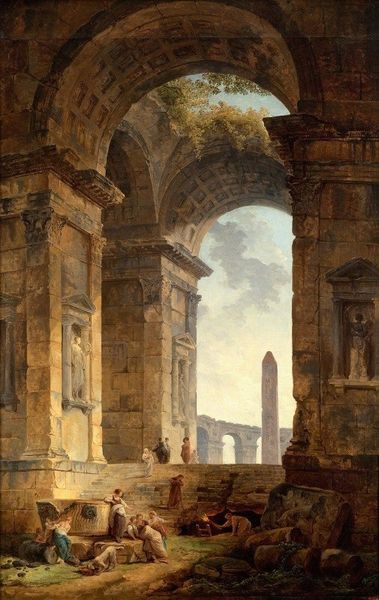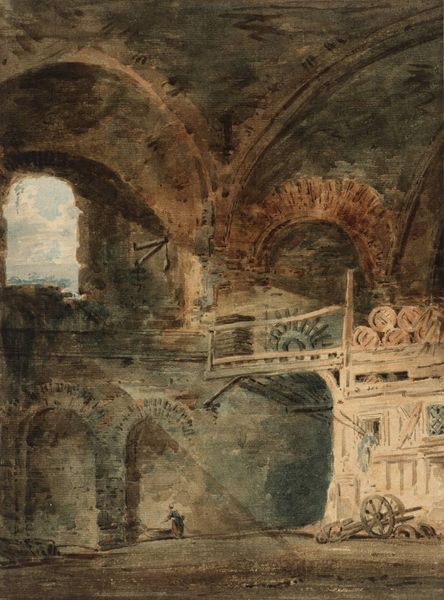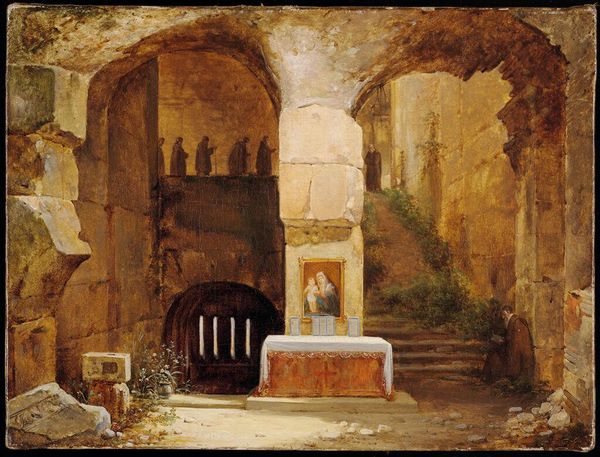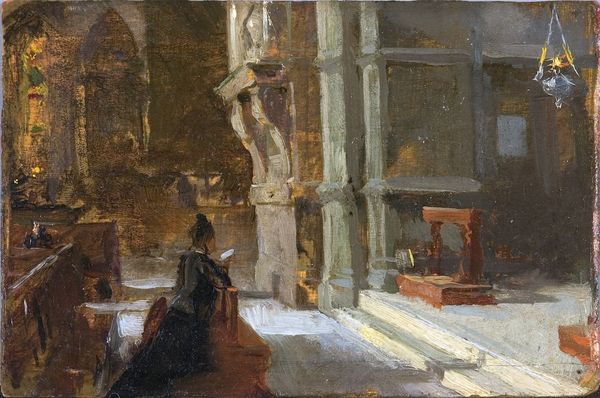
Copyright: Public Domain: Artvee
Félix Ziem’s painting captures a scene at the Doge’s Palace in Venice, dominated by the architectural motifs of arches and columns. These aren't merely structural; they're symbols, laden with cultural memory, representing power and order. The arch, a motif stretching back to Roman triumphal arches, embodies victory and dominion. Here, it frames the departure, a gateway not just in space but in the lives of those who pass beneath it. This echoes in Renaissance paintings and even earlier Byzantine mosaics, each iteration carrying the weight of its historical predecessors, yet adapting to new cultural nuances. Consider how these arches resonate with the arches in depictions of the Virgin Mary, promising protection. The subconscious appeal lies in the safety of its embrace. The cyclical journey of the symbol—from ancient Rome to Venice and beyond—reveals how forms resurface, evolving yet forever tethered to their origins, haunting our collective consciousness.
Comments
No comments
Be the first to comment and join the conversation on the ultimate creative platform.


